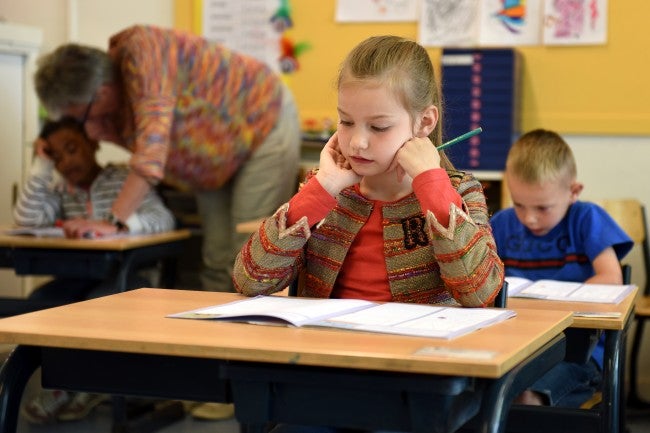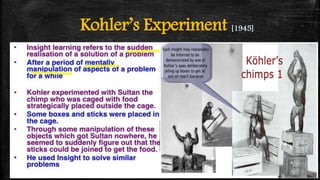Ivan Pavlov (1849-1936), was a renowned Russian Psychologist. He propounded the theory of classical conditioning in learning. Classical conditioning theory explains how an organism’s behaviour becomes paired with some stimuli/factors in the environment. This theory, sometimes referred to as “stimulus-substitution”, represents a condition where through contiguity and repetition in a presentation of a stimulus, a learner generalizes an existing stimulus-response connection to some new stimuli.
The focus of this theory is on a pattern of learning where the catalyst for behaviour change is, what precedes behaviour. The theory was based on the fact that unconditioned stimulus would originally produce unconditioned response. For example, Pavlov believed that the food (U S) would naturally produce salivation (U R) in dog.
This kind of reaction or response was referred to as unlearnt reflex action. He went further to say that when U S (food) is paired with the sound of bell (C S) i.e. conditioned stimulus, the dog would produce salivation (U R). This is what he called the conditioning stage. At another stage, U S was removed leaving C S alone. After the experiment, the dog produced conditioned response (C R) salivation.
 |
| Classical Conditioning Theory of Learning |
This stage of learning could be referred to as manifestation of conditioned response (learnt behaviour). Thus, the experiment is summarized below with these classical conditioning model
THE CLASSICAL CONDITIONING MODEL
Pavlov used this relatively simple experiment as a model for describing much of the automatic/nonconscious learning that occurs in everyday life. In any case where you have “learned” to respond automatically to some sort of stimulus with fear, joy, excitement, or anticipation you have become classically conditioned. In fact, a basic characteristic of classical conditioning, is that the learning is automatic and non-conscious. Pavlov identified four basic components in this classical conditioning model.
The Unconditioned Stimulus (US) is the stimulus that naturally and instinctively elicits the target response, which, in the case of his classic experiment is the meat powder. The Conditioned Stimulus (CS) is the stimulus that comes to elicit the target response, which was the tuning fork tone in Pavlov’s experiment. The unconditioned and conditioned responses are a bit difficult to identify since they are often the exact same behaviour. For example, in Pavlov’s experiment they are both salivation. The fundamental difference is that the Unconditioned Response (UR)occurs as a result of the unconditioned stimulus, and the Conditioned Response (CR) occurs in response to the conditioned stimulus. In the Pavlov experiment, the unconditioned response is salivation in response to the meat powder, and the conditioned response is salivation in response to the tone of a tuning fork.
 |
| Variables in Pavlov’s Dog Experiment |
One special and most common example of classical conditioning is taste aversion. Taste aversion is a case where an organism learns to have an aversion to the taste or smell or other characteristics of some food or drink. For example, people consuming too much alcohol, can be made to learn to associate the smell or even sight of the alcohol with the sickness that resulted from consuming the alcohol, hence eventually made to exit.
JB Watson (1878 – 1958)
John B. Watson was the first American psychologist to use Pavlov’s ideas. Like Thorndike, he was originally involved in animal research, but later became involved in the study of human behaviour. (He is credited with coining the term “behaviourism”)
Watson believed that humans are born with a few reflexes and the emotional reactions of love and rage. All other behaviour is established through stimulus-response associations through conditioning.
Watson’s Experiment
Watson demonstrated classical conditioning in an experiment involving a young child (Albert) and a white rat. Originally, Albert was unafraid of the rat; but Watson created a sudden loud noise whenever Albert touched the rat. Because Albert was frightened by the loud noise, he soon became conditioned to fear and avoid the rat. The fear was generalized to other small animals. Watson then “extinguished” the fear by presenting the rat without the loud noise. Some accounts of the study suggest that the conditioned fear was more powerful and permanent than it really was.
Certainly Watson’s research methods would be questioned today; however, his work did demonstrate the role of conditioning in the development of emotional responses to certain stimuli. This may explain certain fears, phobias and prejudices that people develop.
CHARACTERISTICS OF CLASSICAL CONDITIONING
There are, of course, many variables that can affect the degree to which classical conditioning will or will not occur in different situations. As you might have suspected the study of classical conditioning can become quite complex through the consideration of these different variables, and learning researchers have examined many over the years. Here, we shall briefly consider some of these variables that have received the most attention.
· Latency: This is the time difference between the conditioned stimulus and the unconditioned stimulus.
· Extinctionrefers to the fact, that, if the conditioned and unconditioned stimuli are not paired for a given number of trials an organism will stop exhibiting the conditioned response.
· Spontaneous recovery: This is the re-occurrence of a classically conditioned response after extinction has occurred.
· Generalisation:This is the case where stimuli that are like the conditioned stimulus come to elicit the same response.
· Stimulus Discrimination: This is the ability to determine the type of stimulus that can produce reward.
Note that
1. The conditioned stimulus must come first. For example, if Pavlov always sounded the tone after the dog got meat powder, the tone, in the absence of the meat powder, would signal that the dog somehow missed getting its meat powder so, in fact, it might as well not salivate.
2. Given that the conditioned stimulus does precede the unconditioned stimulus, the general rule in conditioning is that the shorter the latency the more likely it is that the conditioning will occur.
The major principle behind classical conditioning is contiguity. Munsaka (2011) noted that under the contiguity principle learning could only be explained by association , it has been argued that when two events repeatedly occur together they tend to become associated.
APPLICATION OF CLASSICAL CONDITIONING
Classical conditioning has a number of situations in our daily life in which it can be applied. Classical conditioning can be applied in a classroom situation, clinics as wells as in business and school general set up. Researchers have argued that classical conditioning can be involved in both positive and negative experiences of children in the classroom. It should be noted that among the things in the child’s schooling that produce pleasure because they have become classically conditioned are a favourite song, feelings that the classroom is a safe and fun place to be, and teacher’s warmth and nurturing. For instance, the song could be neutral stimulus for the child not until the child joins with the other classmates to sing it with positive accompanying positive feelings.
Additionally, classical conditioning can be applied in understanding different behaviour of pupils and seeking positive intervention. For example, children can develop fear of the classroom if they associate the classroom with criticism. Therefore, criticism becomes the conditioned stimulus, for example, a child fails a test and s/he is criticised which in turn produces anxiety; thereafter, the child associates tests with anxiety, so they become conditioned stimulus for anxiety. Therefore, it comes out clear that test anxiety is another example of classical conditioning. Bad results on a series of tests will lead students to have a negative attitude taking tests. Counter-conditioning would be needed to reverse the anxiety. Relaxation techniques could be very useful in this situation. In this case, it is necessary for classroom responsible officers to avoid non constructive criticism.
It is also worth noting that Pavlov identifies the concept of stimulus generalisation in classical conditioning, where the dog did not just learn to salivate to the exact sound of the bell that it had been conditioned to. The dog had learnt to generalise response by salivating to sounds that were similar to that of the bell. Therefore a teacher would easily understand the behaviour of pupils in an event where the pupil is criticised for poor performance in biology test. When he she begins to prepare for chemistry test, the pupil becomes nervous because these two test are closely related in the sciences. Hence the pupil’s anxiety is generalised from taking a test in one subject to taking test in another.
Classical conditioning can also be used to help pupils start liking certain aspects of school which they might have disliked. For instance, the four-year boy who may not like school can be conditioned to start liking school by pairing the school environment with the toys which the child likes so that the boy can associate the school to the things he likes. After repeatedly pairing the toys boy would now like the school environment because he associates the school environment to the things he likes.
The technique is also useful in the treatment of anxiety problems. Teachers are able to apply classical conditioning in the class by creating a positive classroom environment to help students overcome anxiety or fear. It has therefore been established that pairing an anxiety-provoking situation, such as performing in front of a group, with pleasant surroundings helps the student learn new associations. Instead of feeling anxious and tense in these situations, the child will learn to stay relaxed and calm.
Many dog trainers use classical conditioning techniques to help people train their pets. In Africa societies for instance in Zambia Eastern province classical conditioning is used in the keeping of chickens and pigs in many of the villages of the Eastern Zambia. In this particular case the owner of pigs and chickens identifies a particular sound to be made for instance in case of pigs and individual would shout “kudya kudya” which is neutral stimuli followed by presentation of food which is unconditioned stimulus. After contiguous pairing, the pigs are able to associate the shouting kudya kudya to the presentation of food. This is used similarly with the chickens where they are taught to associate the sound made to the presentation of grain. This is used when a farmer wants to gather his or her domestic animals for counting.
Implications of Pavlov’s Theory to Classroom Situations
The theory believed that one must be able to practise and master a task effectively before embarking on another one. This means that a student needs to be able to respond to a particular stimulus (information) before he/she can be associated with a new one.
Teachers should know how to motivate their students to learn. They should be versatile with various strategies that can enhance effective participation of the students in the teaching-learning activities.
Most of the emotional responses can be learned through classical conditioning. A negative or positive response comes through the stimulus being paired with. For example, providing the necessary school material for primary school pupils will develop good feelings about school and learning in them, while, punishment will discourage them from attending the school.
Conclusion
A theory is a set of generalized statements supported by experimental evidence. Classical conditioning theory was formulated by Ivan Pavlov and the basic tenet of the theory is that behaviour of an organism can be manipulated using some environmental factors. The key relevance of theory to the learning is: it emphasizes practice of one task before moving on to another and encourages the use of motivation for effective learning.








